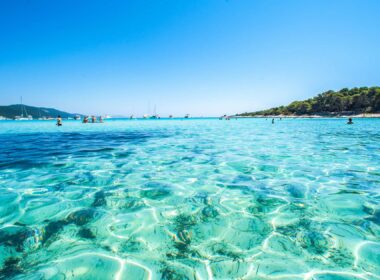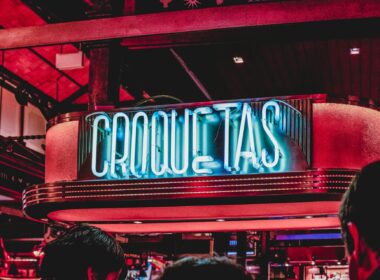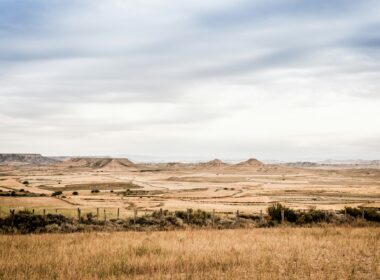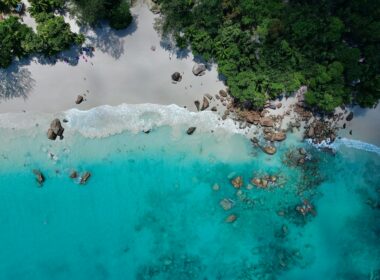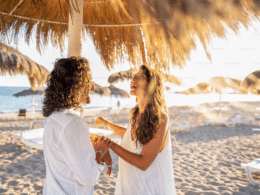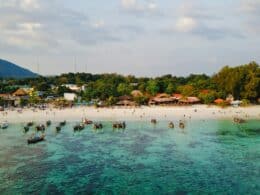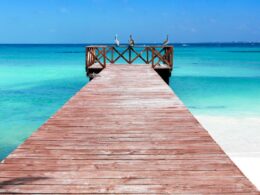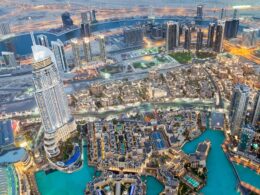Are you looking to travel to Cambodia, a country where ancient history and modernity blend together ?
From the temples of Angkor, witnesses to the ancient Khmer Empire, to the streets of Phnom Penh, Cambodia offers a mosaic of cultural experiences.
Trazler helps you prepare for your trip with this comprehensive guide. Whether you are passionate about history, an adventurer, or simply curious to discover new cultures, Cambodia has much to offer !
Preparing for your trip to Cambodia
When to visit Cambodia?
With its tropical climate, Cambodia offers two main seasons: dry and rainy.
The best time to visit Cambodia is during the dry season, from November to April. The weather is usually sunny during these months, and the temperatures are more comfortable.
The months from December to February are recommended for optimal weather conditions.
What budget should you plan for visiting Cambodia?
The budget for a 15-day stay in Cambodia can vary depending on your travel style.
For an average traveler, expect to spend about 30 to 50 dollars per day (and per person) on accommodation, food, local transportation, and some activities. This equates to a total budget of about 450 to 750 dollars for your trip.
This budget can increase if you opt for luxury accommodations or excursions!
What visa is needed to travel to Cambodia?
When travelling to Cambodia, most nationalities need to obtain a visa. There are several visa options available :
- Visa on arrival: Most nationalities can get a Visa on Arrival for tourism or business purposes. This visa is valid for 30 days and costs around $30 for tourism and $35 for business purposes. It can be extended once for an additional period.
- e-Visa : Alternatively, nationals from over 200 countries can apply for an e-Visa online before arrival, which costs about $36. The e-Visa is valid for a single entry and allows a stay of up to 30 days for tourism purposes. Entry with an e-Visa is permitted through designated airports and land crossings.
- Visa Exemption: Citizens from certain ASEAN countries are exempt from needing a visa for 14 to 30 days, depending on the country.
It’s essential to ensure that your passport is valid for at least six months beyond your entry into Cambodia and that it has at least one or two blank pages for the visa stamp.
What vaccinations are needed to visit Cambodia?
Before leaving, it is advisable to update certain vaccinations such as typhoid fever, hepatitis A and B, and rabies, especially if you spend much time outside the main cities.
The tetanus vaccine is also recommended. Additionally, antimalarial treatment may be advised depending on the regions you will visit and the season. Do not hesitate to discuss this with your doctor before leaving!
Week 1: Angkor, the beating heart of the Kingdom
Day 1: Discovering Angkor Wat
Start your week at the famous temple of Angkor Wat, ideally at sunrise. Built in the 12th century by King Suryavarman II, it is the largest religious monument in the world and represents the pinnacle of Khmer architecture.
It was initially dedicated to the Hindu god Vishnu, designed to symbolize Mount Meru, the center of the universe and abode of the gods in Hindu mythology. Its bas-reliefs are among the most detailed and preserved in the world, illustrating mythological and historical scenes. Over the centuries, Angkor Wat has undergone transformations, shifting from a Hindu temple to a Buddhist center around the 14th century.
Can you find a comfortable hotel for under $100 a night? Pandora Suite d’Angkor is a 5-star hotel located less than a kilometer from the center. The Sabara Angkor Resort & Spa, a bit more expensive, offers a place to relax after your visits. For more options, look on Trazler’s website!
Days 2 and 3: Angkor Thom and its surroundings
The next day, head to Angkor Thom, the ancient imperial capital. Start at the Bayon temple, famous for its towers adorned with smiling faces, then continue to Baphuon and the Terrace of the Elephants. The afternoons can be devoted to less frequented but equally captivating temples like Banteay Kdei.
Day 4: Ta Prohm and Small Circuits
Ta Prohm, known for its giant trees intertwining their roots with the stones of the ruins, offers a mystical atmosphere, especially early in the morning, to avoid the crowds.
Historically called Rajavihara (“Monastery of the King”), Ta Prohm is located in the Angkor Archaeological Park near Siem Reap, Cambodia. Founded in 1186 during the reign of Jayavarman VII, this temple served as a Mahayana Buddhist monastery and university.
Unlike other more restored sites, it has been deliberately left in a state of apparent neglect. Conservation efforts aim to maintain its integrity while allowing the jungle environment to integrate with the ruins.
After this first visit, you can explore the small circuits, which will allow you to see other temples around.
Day 5: Grand Circuit
The Grand Circuit takes you to more remote sites such as Preah Khan, Neak Pean, and East Mebon. These temples are ideal for those looking to understand the extent and architectural diversity of the Angkor site without the crowds of the most popular spots.
Day 6: Banteay Srei and Roluos Group
Visit Banteay Srei, known for its delicate stone carvings, early in the morning for better light and fewer people.
In the afternoon, explore the Roluos Group, the oldest structures in the region, which offer an insight into the early evolution of Khmer architecture.
Day 7: Museums and Markets
For your seventh day, take the time to immerse yourself in the local ambience by exploring its museums and markets.
The museums to visit include :
- Angkor National Museum uses multimedia technology to introduce you to the golden era of the Khmer Kingdom. It features impressive galleries and ancient artefacts.
- War Museum Cambodia displays military vehicles and weapons used during Cambodia’s recent conflicts, offering an insight into the era of the Khmer Rouge regime.
- Cambodia Landmine Museum, which educates about the dangers of landmines left after conflicts and showcases ongoing demining efforts.
The markets to visit include :
- Old Market (Psar Chaa) is perfect for those looking to buy souvenirs. It has stalls selling local crafts, textiles, and jewellery. The market’s food section is ideal for sampling Cambodian street food and observing local life.
- Night Market: Ideal for an evening experience, where you can purchase souvenirs and enjoy the lively atmosphere.
Some practical tips :
- Hire a tuk-tuk for the day or choose a guided tour that offers insights and handles the logistics of transportation between different sites.
- Choose accommodation near the Angkor site or in Siem Reap to facilitate daily access to the temples and enjoy the city’s amenities. Search for the best accommodations on Trazler.
Week 2: Discovering the Provinces
You can explore the country’s provinces for your second week in Cambodia.
Battambang
Battambang is renowned for its cultural attractions. Don’t miss the Provincial Museum of Battambang, where you can discover ancient Khmer sculptures and traditional Cambodian textiles.
The area is also famous for the bamboo train, a unique local transportation experience offering scenic countryside journeys.
Kep
Kep, a coastal province in the south, is famous for its seafood, especially the crab market. The area is also cherished for the Kep National Park and the opportunities for relaxation on beaches or during excursions to Rabbit Island. It was once a resort town favored by the elite before being ravaged by civil war.
Sihanoukville
Located in the south of Cambodia, Sihanoukville offers vast beaches like Otres Beach. Beyond the beaches, this province has experienced rapid development, transforming its landscape and posing challenges regarding cleanliness and safety.
The nearby islands, accessible by ferry, are peaceful havens where you can engage in diving and explore vibrant coral reefs.
Some practical tips
Local buses and taxis are available for travel between provinces. Renting a scooter or a car may be an option to explore at your own pace.
Enjoy the local cuisine, which varies significantly from one province to another. Seafood is especially recommended in Kep, while dishes made with Kampot pepper are a must-try.
Practical information for your trip to Cambodia
Currency
In Cambodia, you will mainly use the US dollar (USD) for transactions, but you will often receive change in Cambodian riels (KHR) for small purchases.
You should try to keep bills in good condition, as worn or marked bills are generally not accepted. ATMs are available in major cities and tourist areas, dispensing both riels and dollars.
Insurance
Having comprehensive travel insurance that covers medical care is very important. Check that your insurance covers specific activities you plan to do, such as riding scooters, which is typical but often not covered by standard policies.
Dress code
When visiting temples, plan to wear clothes that cover your shoulders and knees. Light-colored clothing and hats are recommended due to the hot and sunny climate.
Planning your Cambodian journey with Trazler
Want to immerse yourself in Cambodia’s rich history and vibrant culture ? Trazler is here to facilitate your trip from start to finish. By using travel platforms such as Trazler, you can organize your getaway without any stress. Book your Cambodian adventure in advance with Trazler to enjoy favorable rates on hotels, flights, and transfers, all in a single streamlined transaction.
Budget approximately 450 to 750 euros to cover accommodation, food, local transport, and a few activities for a 15-day stay.
The best time to visit Cambodia is during the dry season, from November to April, when the weather is generally sunny and the temperatures more pleasant.
Cambodia is affordable; meals can cost between 2 and 10 euros, and accommodation ranges from 20 euros to 100 euros per night per person, allowing for a budget-friendly trip.


